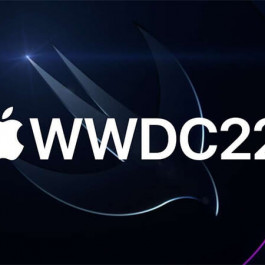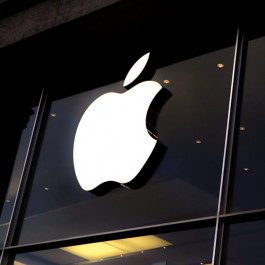
Someone may have heard or seen 5G NR and 4G LTE, so what are 5G NR and 4G LTE, and what is the difference between 5G NR and 4G LTE?
1.What is 4G LTE?
What does “4G LTE” stand for? 4G LTE is short for “fourth generation long-term evolution.” So it’s actually two terms combined. First, “4G” represents the fourth generation of mobile technology, the next big advancement after 3G. A 4G system must provide capabilities defined by ITU in IMT Advanced. And “long-term evolution,” or “LTE,” is industry jargon used to describe the particular type of 4G that delivers the fastest mobile internet experience. 4G LTE is one of several competing 4G standards along with Ultra Mobile Broadband (UMB) and WiMax (IEEE 802.16).
2.What does 5G NR mean?
5G New Radio (NR) is the wireless standard that will become the foundation for the next generation of mobile networks. 5G NR development is part of continuous mobile broadband evolution process to meet the requirements of 5G as outlined by IMT-2020, similar to evolution of 3G and 4G wireless technologies. In past 3G and 4G connected people, where as future 5G will connect everything means 5G NR will be connecting our smartphones, cars, meters, wearables and etc. It aims to make wireless broadband same as of wireline with the fiber-like performance at a significantly lower cost-per-bit. With new levels of latency, reliability, and security, 5G NR will scale to efficiently connect the massive Internet of Things (IoT), and will offer new types of mission-critical services.
3.4G LTE vs. 5G NR
A Short comparison of 5G and 4G technologies is given is table below:
| Technology | Data Rates | Latency | Mobility Support | Spectrum Efficiency | Users Density | Energy Efficiency |
| 5G (NR) | Avg 100 Mb/s Peak 20 Gb/s | ~ 1 ms | > 500 Km/h | x3 Better DL- 30 bits/Hz UL- 15bits/Hz |
1000K/square Km | x100 Better |
| 4G (LTE) | Avg 25 Mb/s Peak 300 Mb/s | ~10- 50 ms | Upto 350 Km/h | DL – 6 bits/Hz UL- 4 Bits/Hz | ~ 2K / square Km | Moderate |
5G New Radio and 4G LTE Parameter Level Comparison:
| Parameter | 4G Long Term Evolution | 5G New Radio |
| Full Name | Long Term Evolution | New Radio |
| 3GPP Release | Release 8 – Release 14 (LTE, LTE-A, LTE-Pro) | Release 15 onward |
| Frequency Range | < 6GHz | Upto 52.6 GHz |
| Services | Voice, MBB, IoT | Voice, eMBB, Low Latency Application, Massive IoT |
| Waveform | • DL: CP -OFDM
• UL: DFT -S-OFDM |
• DL: CP-OFDM;
• UL: CP-OFDM, DFT-S-OFDM |
| Max Carrier Bandwidth | 20 MHz | • Below >6 GHz: 100 MHz;
• Above6 GHz: 400 MHz |
| Subcarrier Spacing (SCS) | 15 KHz | 15 KHz, 30 KHz, 60 KHz, 120 KHz, 240KHz |
| Cylic Prefix (CP) | Normal CP; Extended CP | • Normal CP for all SCSs;
• Extended CP for 60KHzs SCS only |
| Max Number of Subcarriers Per Carrier |
1200 | 3300 |
| Radio Frame Length | 10 ms | 10 ms |
| Slot Size | 2/7/14 OFDM symbols | 1-14 OFDM symbols (including both slot & mini-slot) |
| UL/DL Ratio Change | • Semi-static change with 5ms, 10ms periodicity;
• Dynamic change per -10ms |
• Semi-static change with 0.5ms, 0.625ms, 1.25ms, 2.5ms, 5ms, 10ms periodicity
• Dynamic change per 1/2/5/10/20ms change |
| Synchronization Signals | • PSS: 62 ZC sequence
• SSS: 62 m-sequence • Periodicity: 5ms |
• PSS: 127 m-sequence
• SSS: 127 Gold-sequence • Periodicity: 20 ms for intial access;{5, 10, 20, 40, 80, 160 } ms for CONNECTED/IDLE mode |
| PBCH | • 4-symbol x 72 subcarriers
• Payload: 40 bits, including CRC bits • Periodicity: 10ms |
• 2-symbol x 288 subcarriers;
• Payload: 56 bits, including CRC bits • Periodicity: 20 ms for intial access; {5, 10,20,40,80,160} ms for CONNECTED/IDLE non-standalone cases |
| SS -block Sweeping | 1 | • 4 for <3GHz;
• 8 for 3-6GHz; • 64 for 6-52.6GHz |
| RACH | • PRACH: 839 ZC sequence with 1.25 KHz;
• 4-step RACH |
• Long PRACH: 839 ZC sequence with {15,30,60,120} KHz
• 4-step RACH |
| MIMO Transmission | • Digital beamforming;
• Diversity Tx:SFBC; • Open-loop TX:CDD with precoder • Closed-loop TX:Spatial multiplexing |
• Hybrid (analog = digital) beamforming
• Open-loop Tx: 1-port PC (UE transparent) • Closed-loop Tx: Spatial multiplexing |
| Reference Signals | • DL:CRS, DMRS, CSI-RS;
• UL: DMRS, SRS |
• DL: DMRS, PT-RS (Phase tracking RS) CSI-RS, TRS;
• UL: DMRS, PT-RS, SRS |
| Channel Coding | • PBCH/PDCCH; TBCC;
• PDSCH/PUSCH: Turbo code; • PUCCH: RM block code |
• PBCH/PDCCH/PUCCH: Polar code
• PDSCH/PUSCH: LDPC |
| PDCCH | • Multiplexing with data: FDM
• Tx: Distributed + SFBC • Demodulation: CRS |
• Multiplexing with data: TDM/FDM
• Tx1 Distributed – precoding (UE transparent) • Tx2 Localied = precoding (UE transparent) |
| PUCCH | • Multiplexing with data: FDM;
• PUCCH size: 14 OFDM symbols |
• Multiplexing with data: TDM/FDM
• Long PUCCH size: 4-14 OFDM smbols • Short PUCCH size: 1-2 OFDM symbols |
| HARQ Round-trip Time | FDD: 9ms; TDD: ≥ 8ms | 0.25-16 ms |
| Wideband Operations | • Single Carrier: Up to 20 MHz
• Full carrier BW initial access & IDLE • No UE bandwidth adaptation • CA: Up to 32 carriers; • DC: Up to 64 carriers |
• Single Carrier: Up to 100 MHz or 400 MHz
• Narrow-band anchor initial access & IDLE • UE bandwidth adaptation allowed • CA: Up to 16 carriers; • DC: up to 32 carriers |
| Mobility | • CRS-based RSRP | • SSS-based RSRP for cell or beam;
• CSI-RS based RSRP for beam or transmission point |
The above is the basic difference between 5G NR and 4G LTE, I hope it helps you.
If you have different opinions on 5G NR and 4G LTE, please leave your comments.
Learn More:
5G NR and List of 5G NR networks
New Climber! China’s 5G Signal Ascends to the Summit of Mount Everest
Can We Develop 6G Directly, without Developing 5G Technology?




